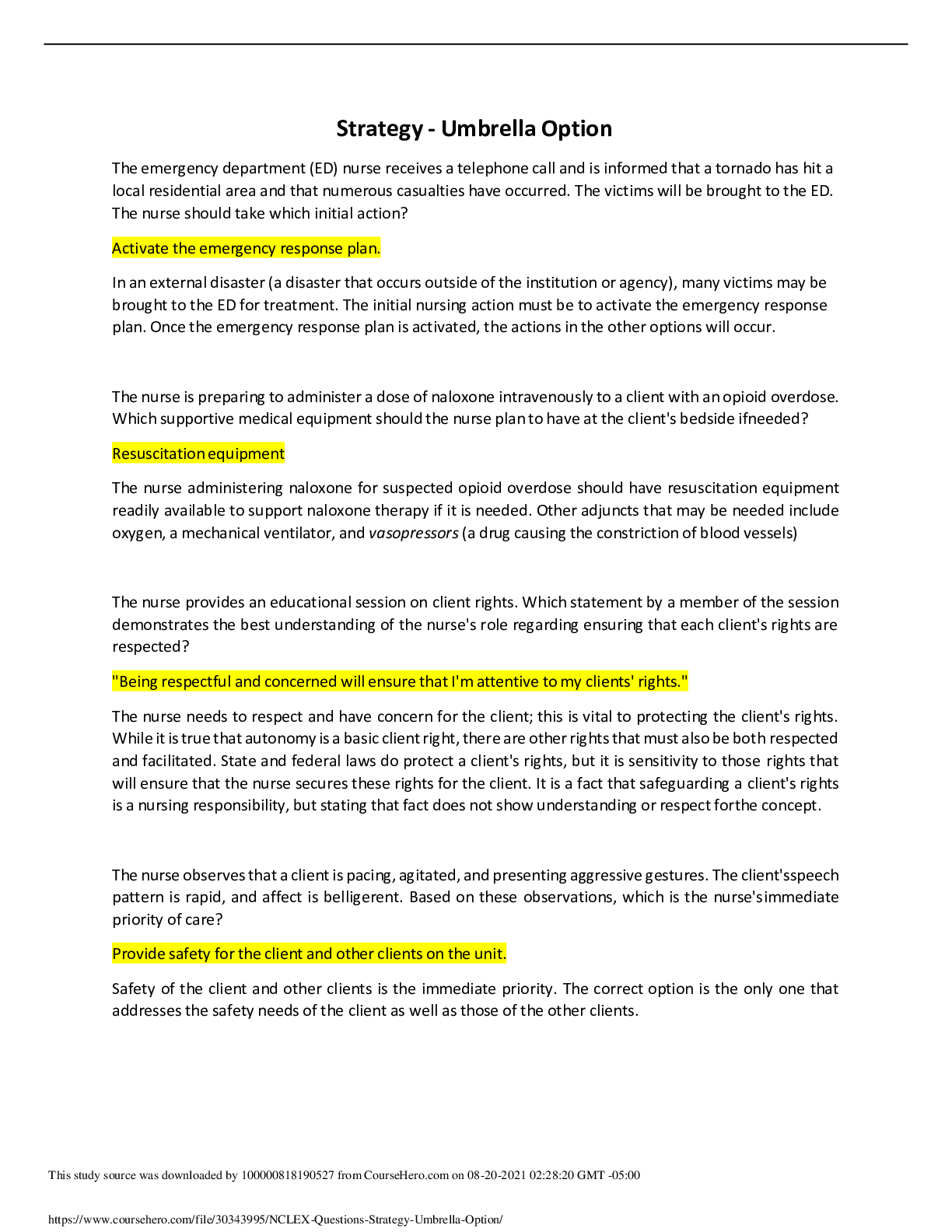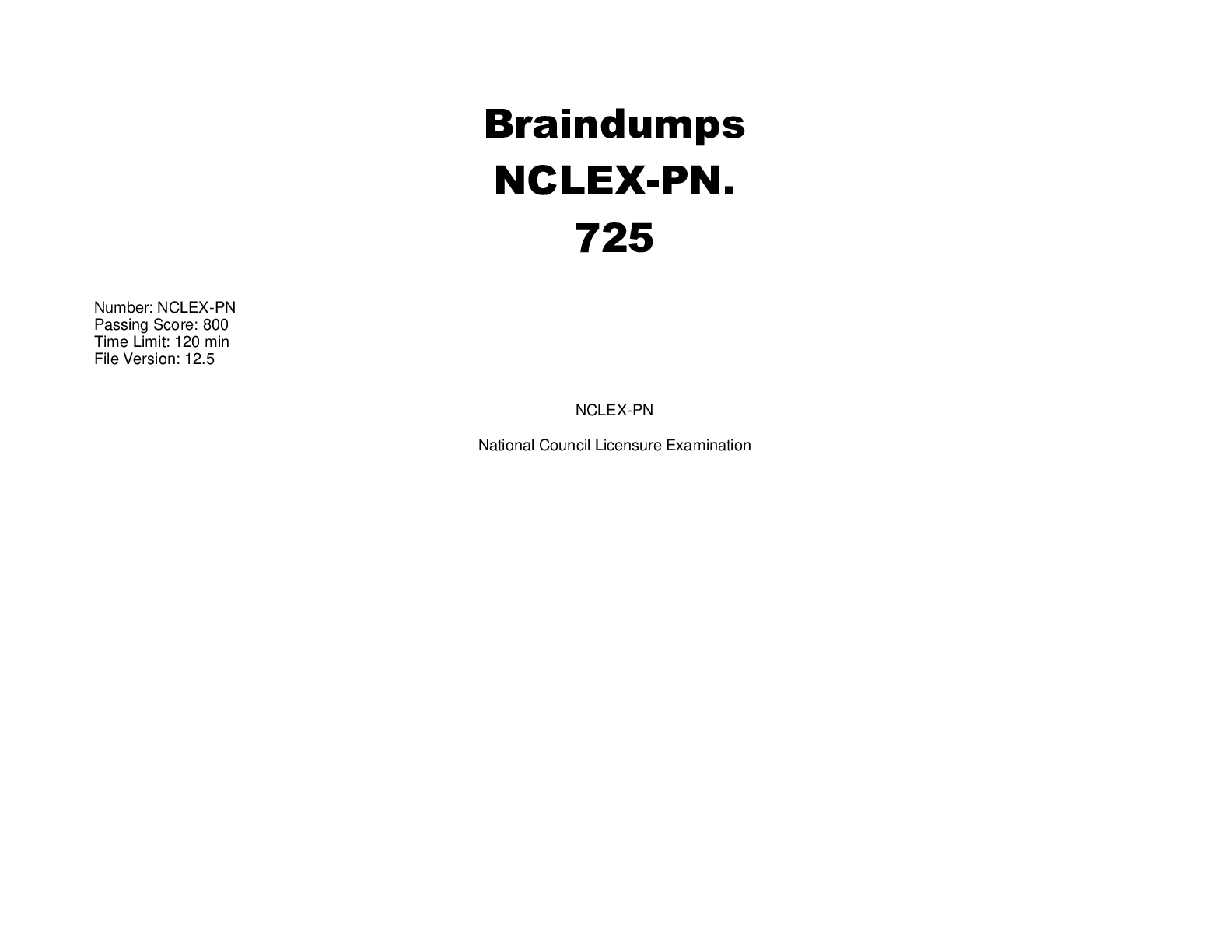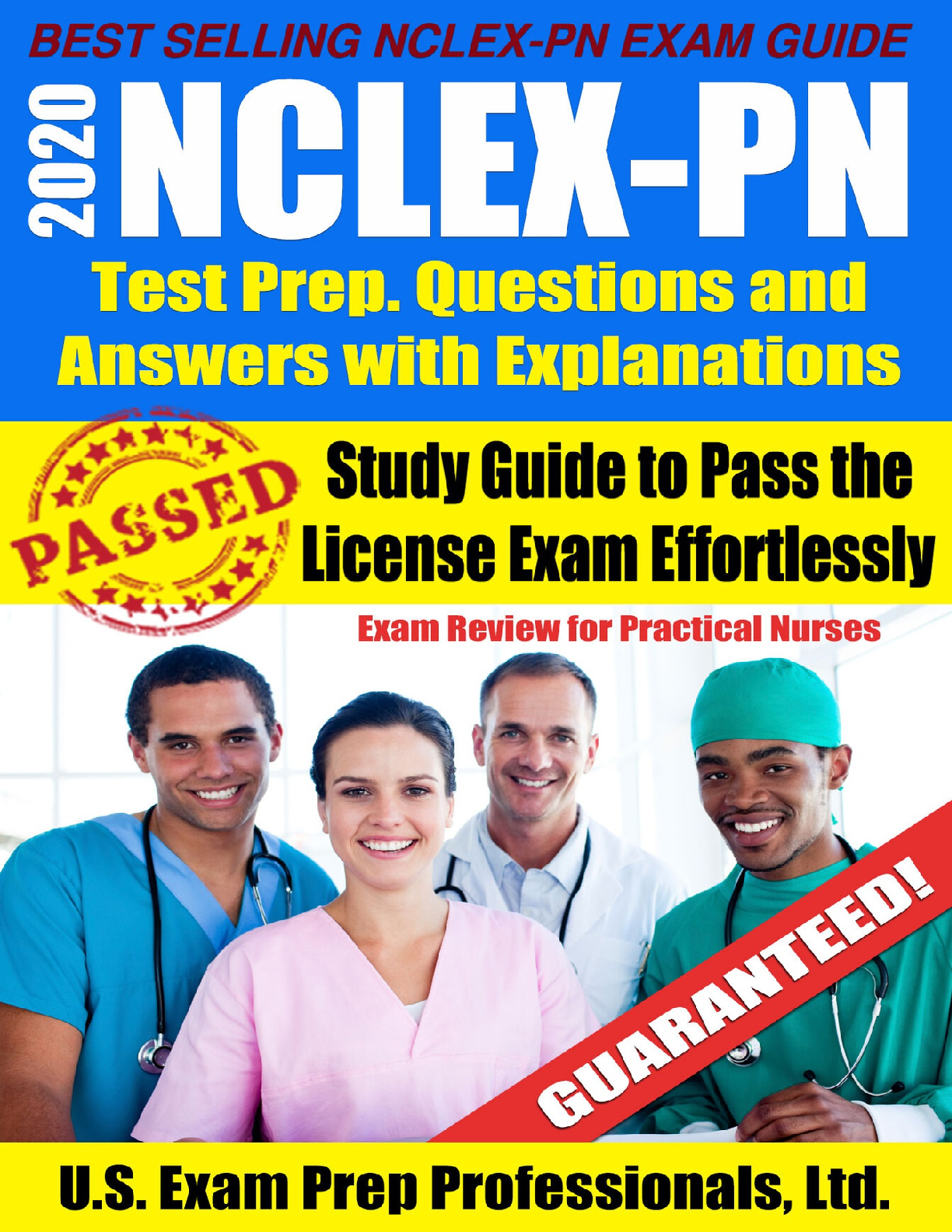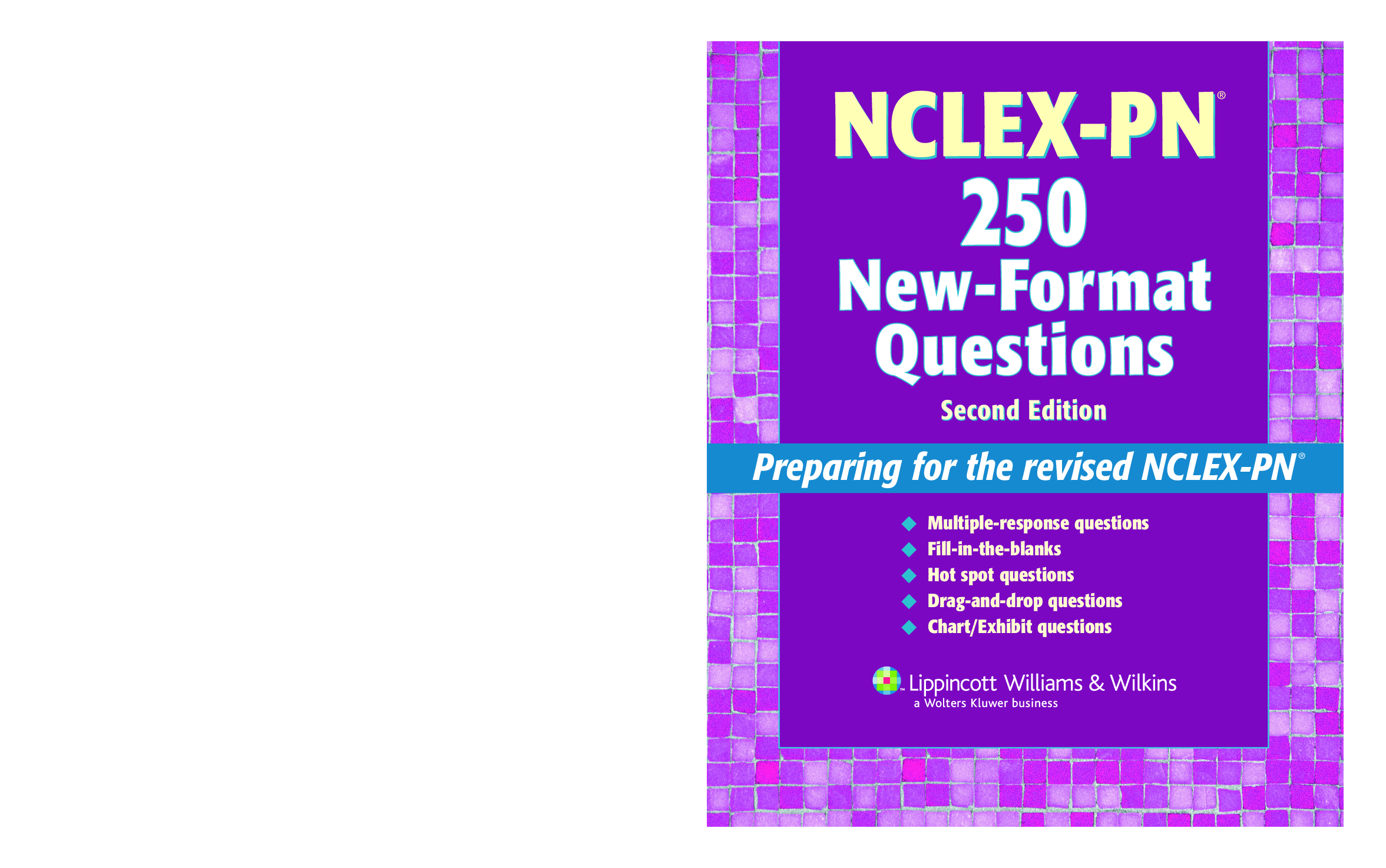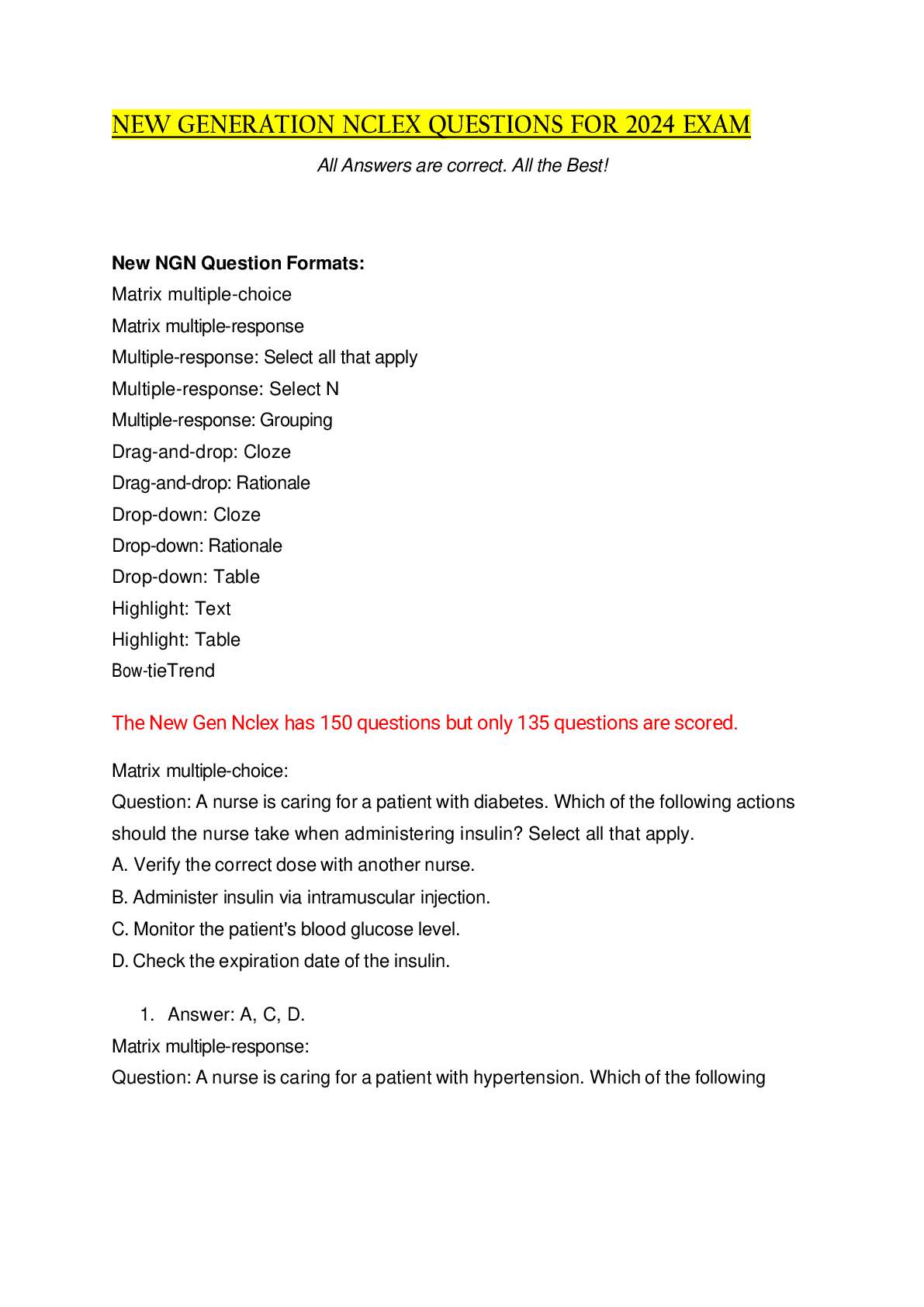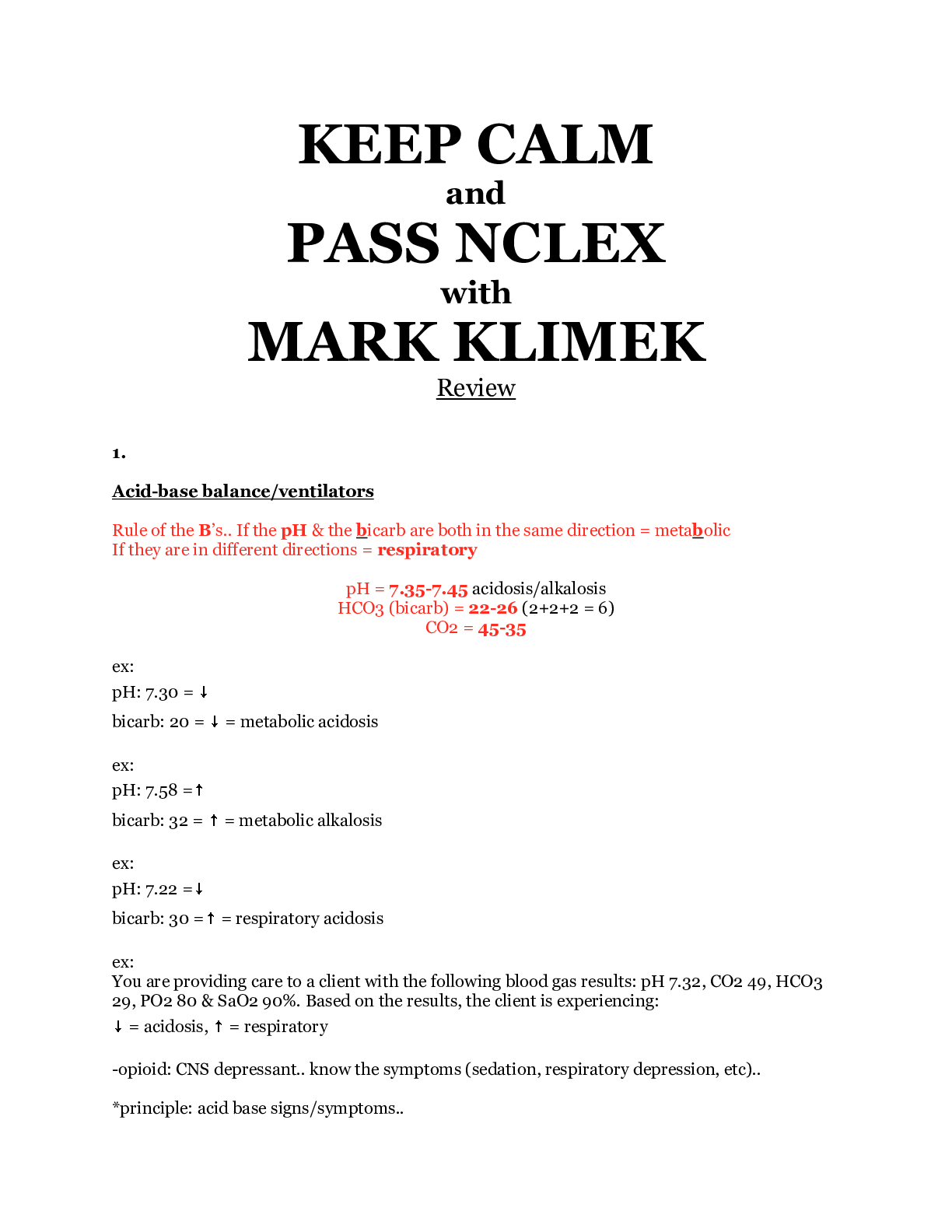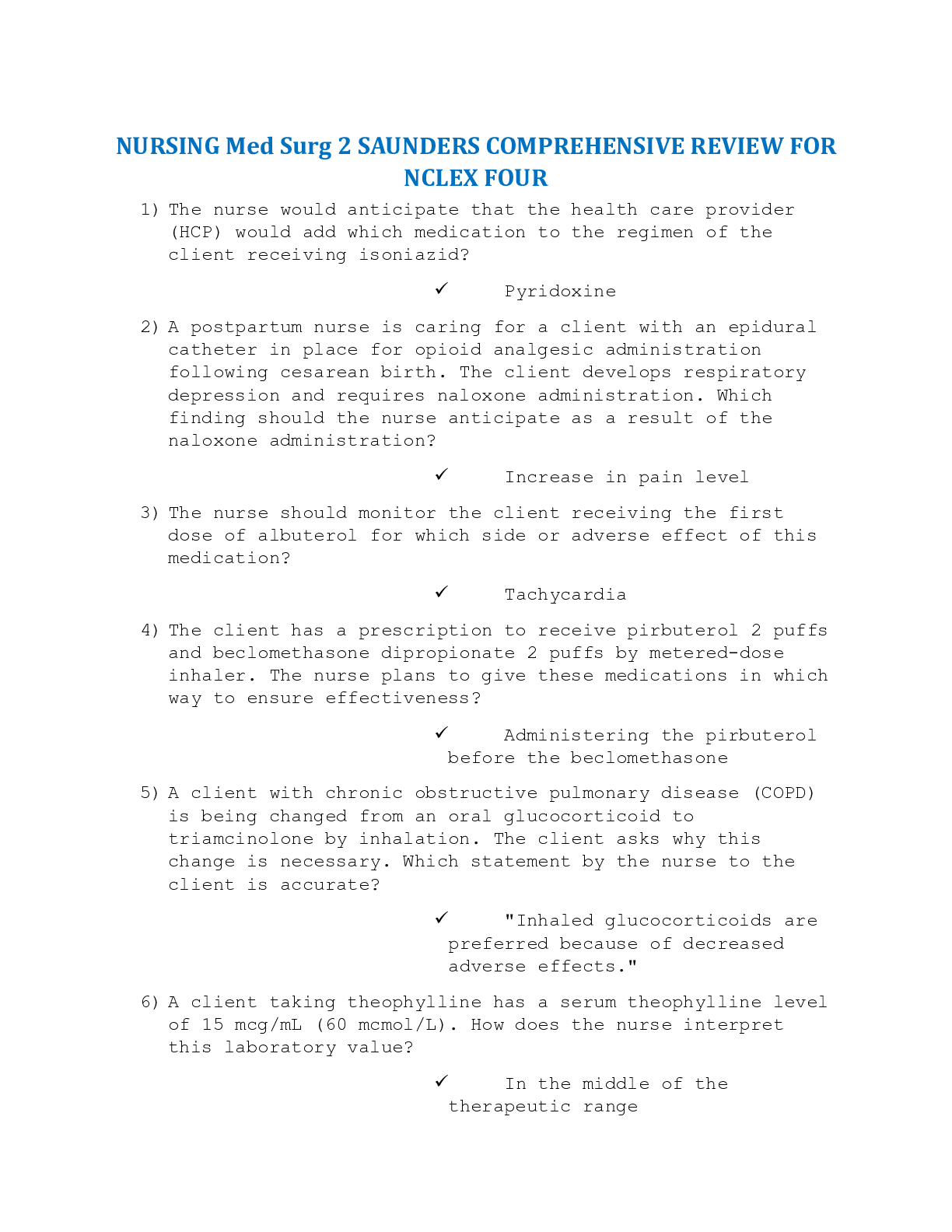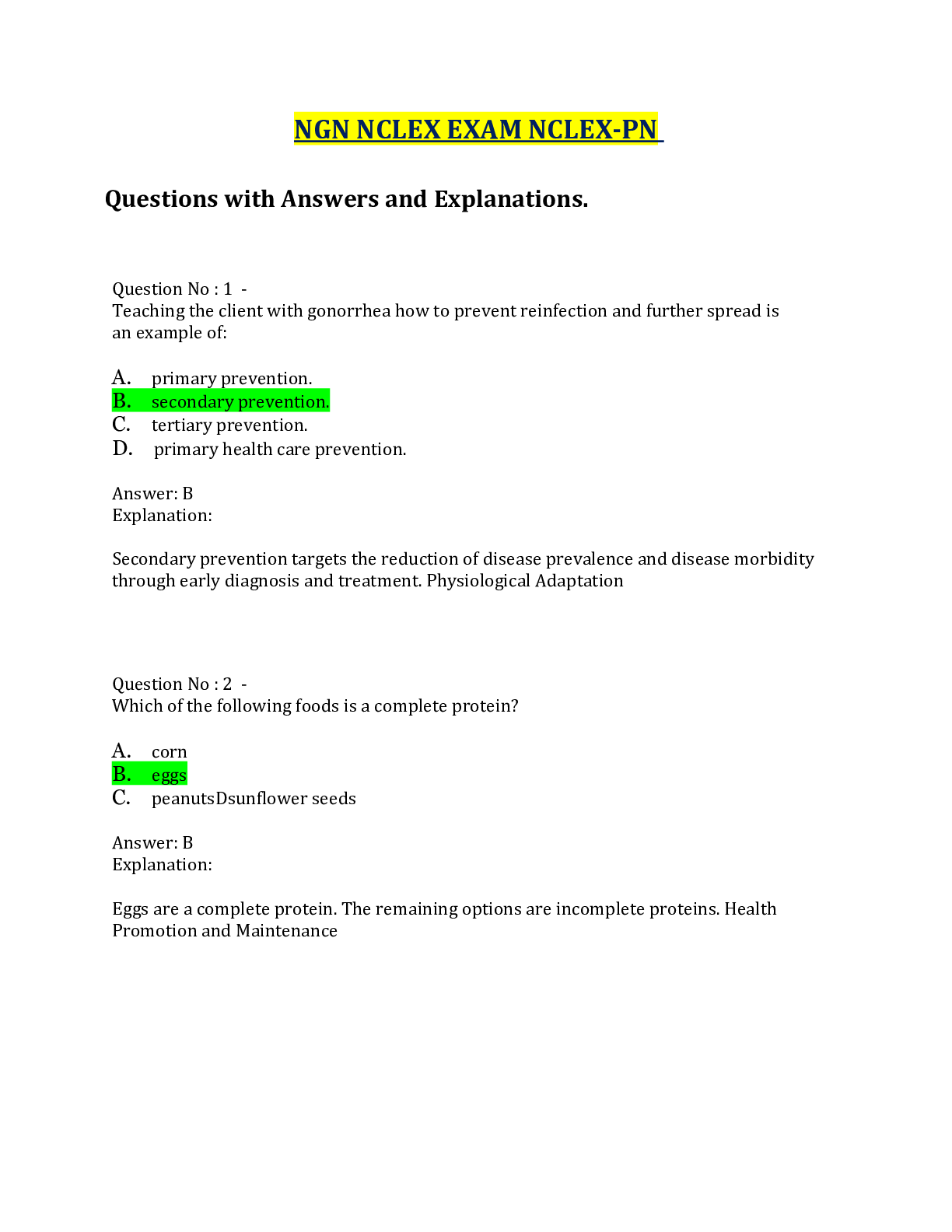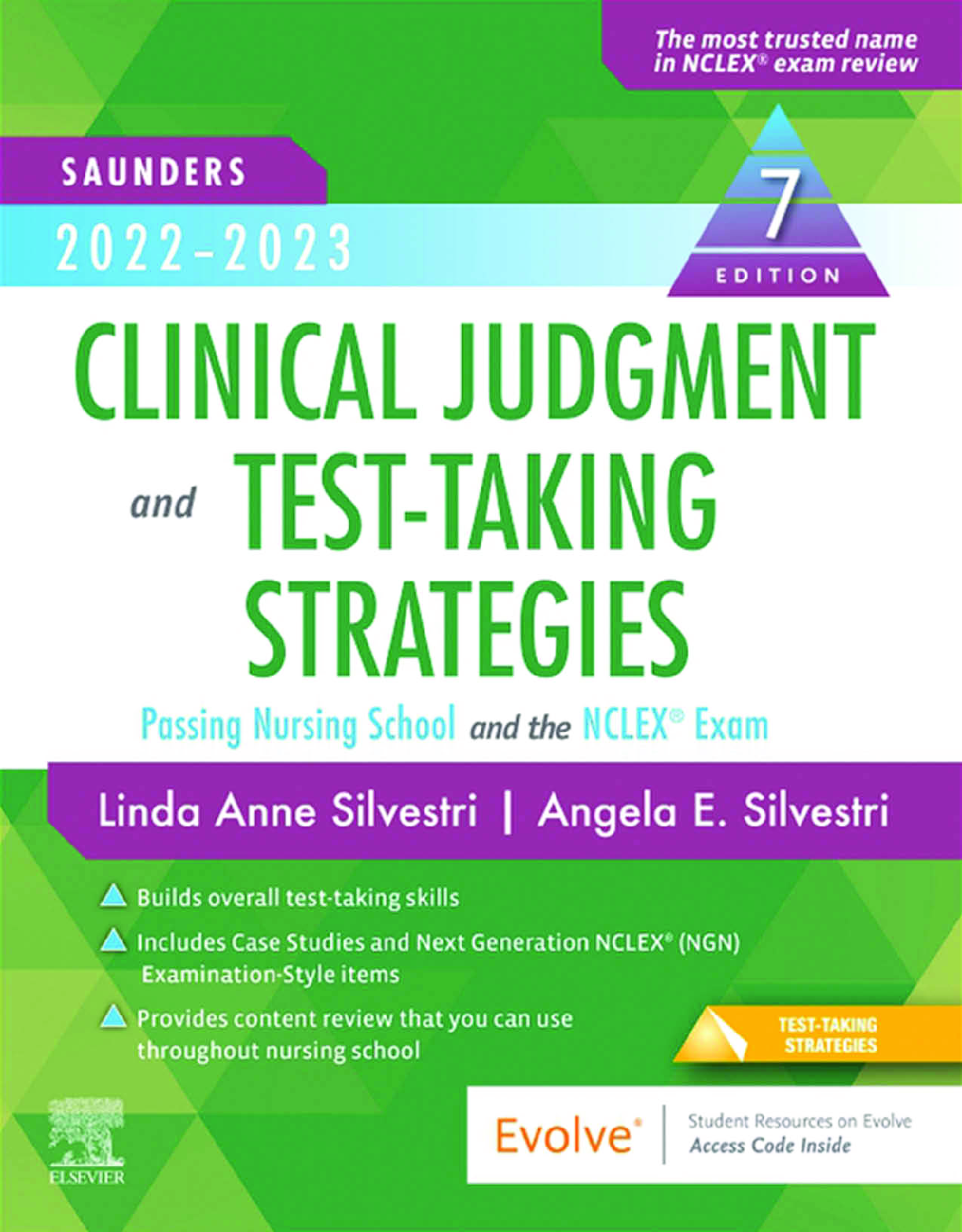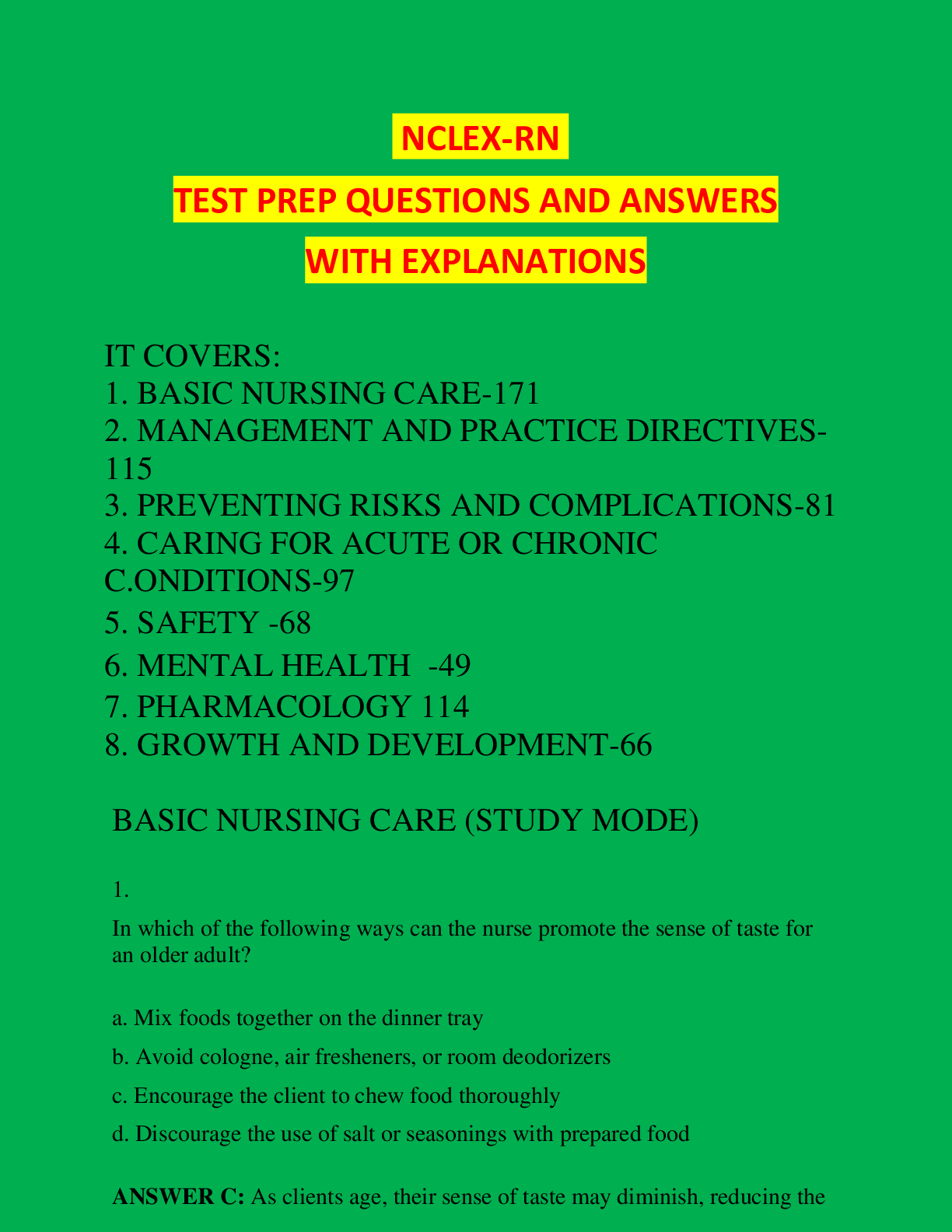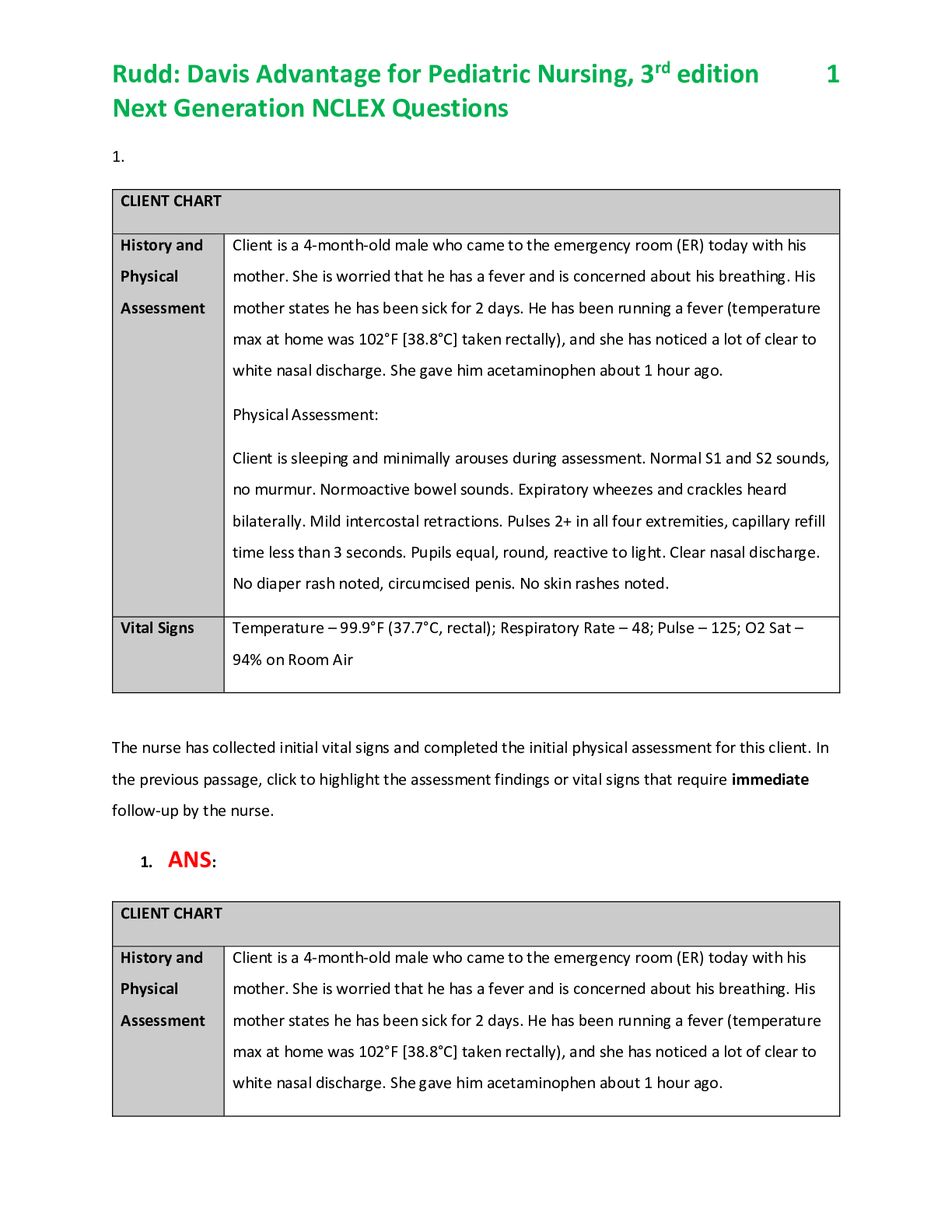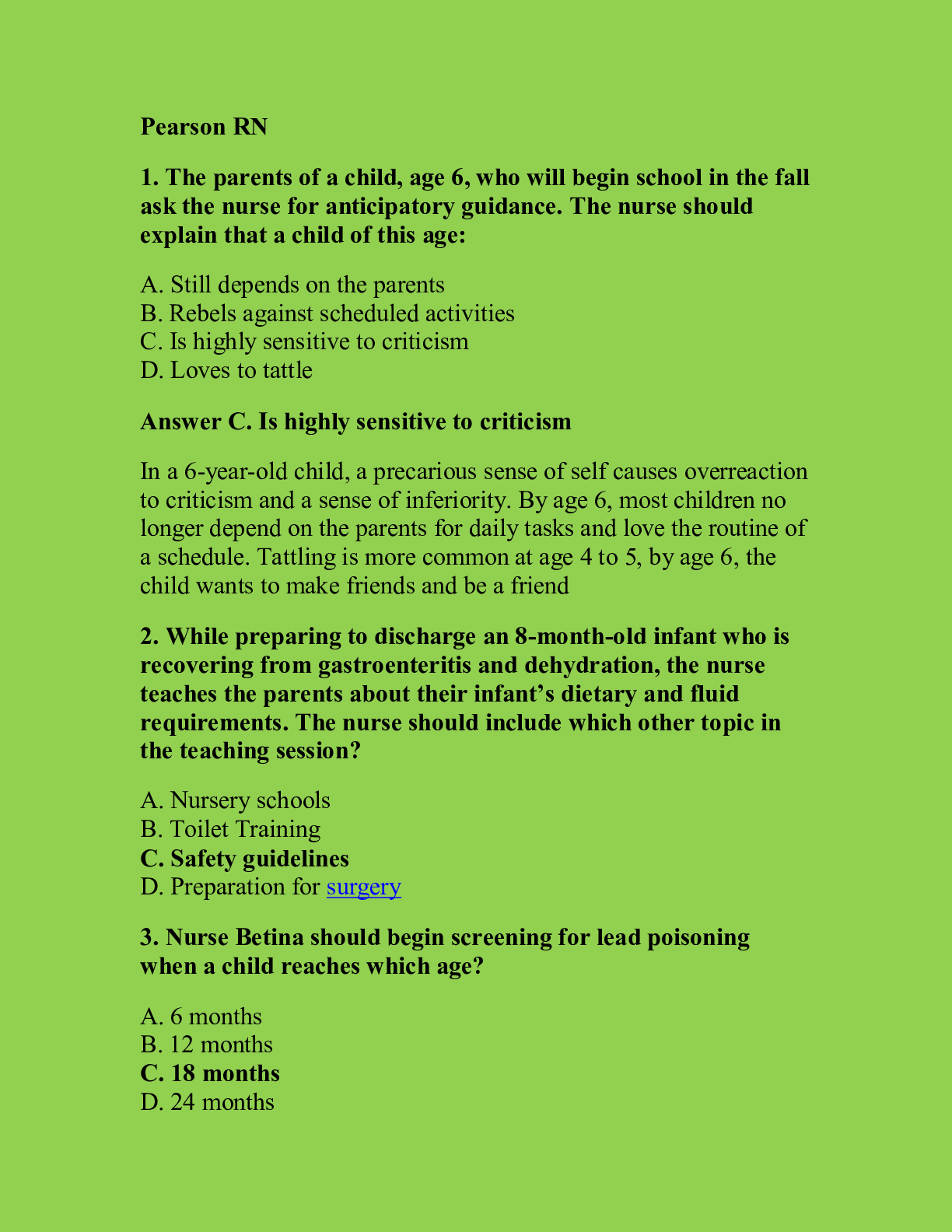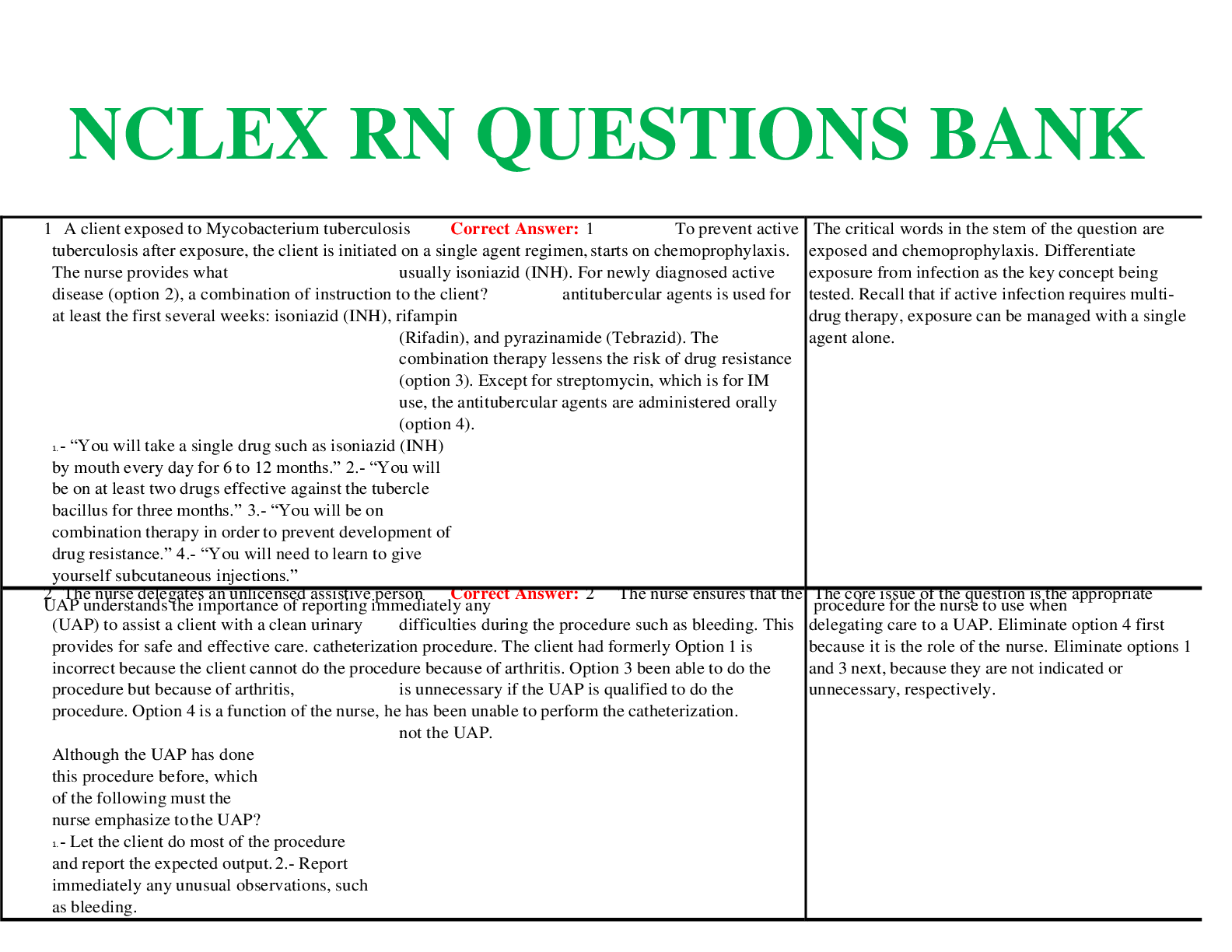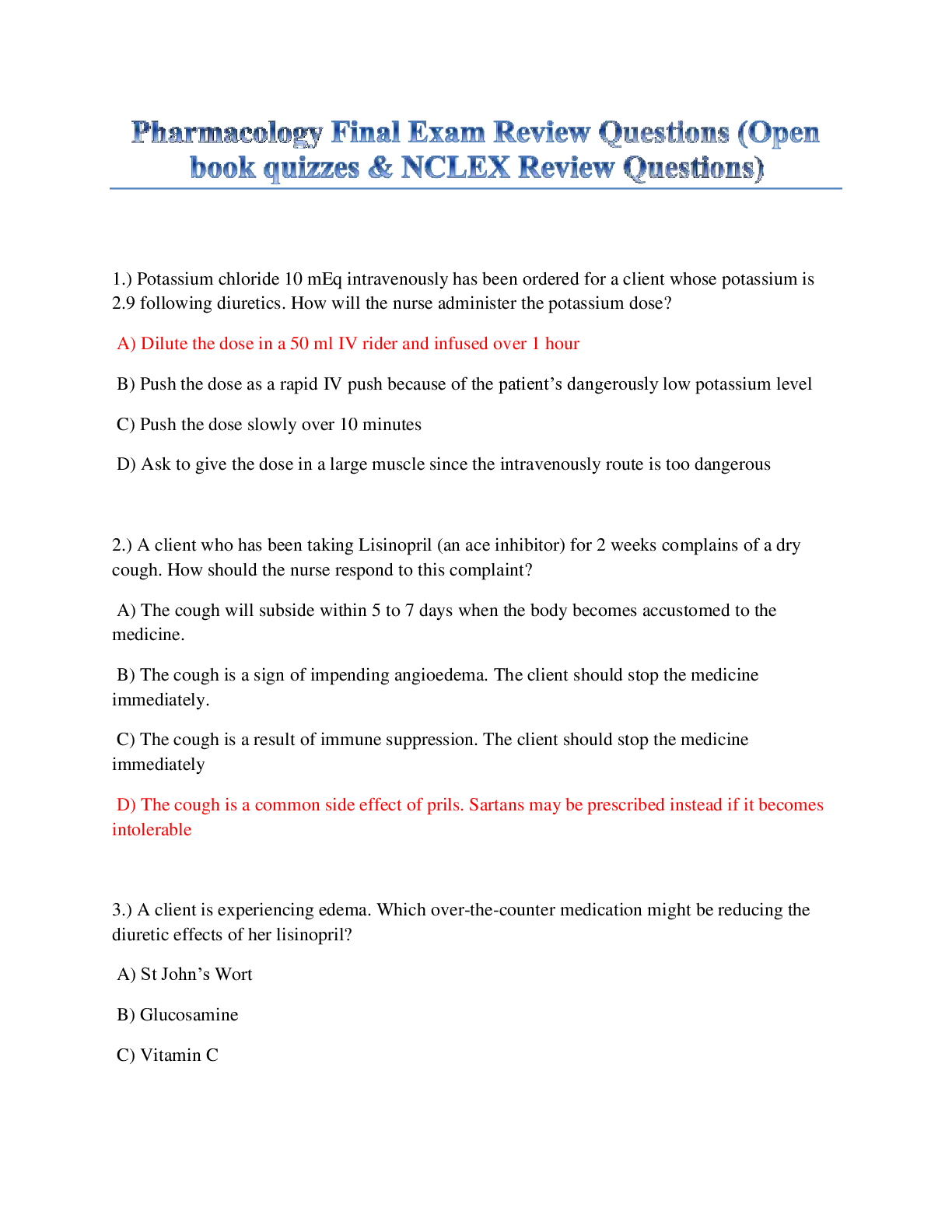HESI MENTAL HEALTH NCLEX- RN
Document Content and Description Below
1. The nurse reviews the laboratory findings for a client's urine drug screen that is positive for cocaine. Which client behavior should be expected during cocaine withdrawal? A. Psychomotor agitat... ion B. Restlessness and hyperactivity C. Detachment from reality and drowsiness D. Distorted perceptions and hallucinations Rationale: During cocaine withdrawal, the nurse should expect option A and a pattern of withdrawal symptoms similar to those of one who uses amphetamines. Options B, C, and D are signs and symptoms of a person who is high on cocaine rather than one who is experiencing withdrawal from cocaine. 2. A middle-aged adult was discharged from a treatment center 6 weeks ago following treatment for suicide ideation and alcohol abuse. In a follow-up visit to the mental health clinic, the client complains of lethargy, apathy, irritability, and anxiety. Which question is most important for the nurse to ask? A. "Are you taking prescribed antidepressants?" B. "How much alcohol do you consume daily?" C. "What seems to precipitate the anxious feelings?" D. "How many hours do you sleep per day?" Rationale: First, and most importantly, the client's use of alcohol should be determined because further treatment is dependent on the client's sobriety, and asking how much alcohol is being consumed is a better question than asking if the client is drinking, which is a "yes-no" answer that does not promote dialogue. Options A, C, and D provide worthwhile assessment data, but first the nurse should determine if the client is still drinking because all efforts to treat symptoms associated with depression are diminished if the client is still consuming alcohol. 3. A 25-year-old client has been particularly restless, and the nurse finds the client trying to leave the psychiatric unit. The client tells the nurse, "Please let me go! I must leave because the secret police are after me." Which response is best for the nurse to make? A. "No one is after you. You're safe here." B. "You'll feel better after you have rested." C. "I know you must feel lonely and frightened." D. "Come with me to your room, and I will sit with you." Rationale: Option D is the best response because it offers support without judgment or demands. Option A is challenging the client's delusion. Option B is offering false reassurance. Option C is a violation of therapeutic communication because the nurse is telling the client how she or he feels (frightened and lonely), rather than allowing the client to describe his or her own feelings. Hallucinating and delusional clients are not capable of discussing their feelings, particularly when they perceive a crisis. 4. A client who is being treated with lithium carbonate for manic depression begins to develop diarrhea, vomiting, and drowsiness. Which action should the nurse take? A. Notify the health care provider immediately and force fluids. B. Prior to giving the next dose, notify the health care provider of these symptoms. C. Record the symptoms and continue with medication as prescribed. D. Hold the medication and refuse to administer additional doses. Rationale: Although these are expected symptoms, the health care provider should be notified prior to the next administration of the drug. Early side effects of lithium carbonate (occurring with serum lithium levels below 2 mEq/L) generally follow a progressive pattern, beginning with diarrhea, vomiting, drowsiness, and muscular weakness (option C). At higher levels, ataxia, tinnitus, blurred vision, and large dilute urine output may occur. Option A will lower the lithium level. Option D is not warranted. 5. A nurse working in the emergency department of a children's hospital admits a child whose injuries could have been the result of abuse. Which statement most accurately describes the nurse's responsibility in cases of suspected child abuse? A. Obtain objective data such as radiographs before reporting suspicions. B. Confirm suspicions of abuse with the health care provider. C. Report any case of suspected child abuse. D. Document injuries to confirm suspected abuse. Rationale: It is the nurse's legal responsibility to report all suspected cases of child abuse, and notifying the nurse manager or charge nurse starts the legal reporting process. Options A, B, and D delay the first step in reporting the abuse. [Show More]
Last updated: 1 year ago
Preview 1 out of 33 pages

Reviews( 0 )
Document information
Connected school, study & course
About the document
Uploaded On
Aug 20, 2021
Number of pages
33
Written in
Additional information
This document has been written for:
Uploaded
Aug 20, 2021
Downloads
0
Views
12230


